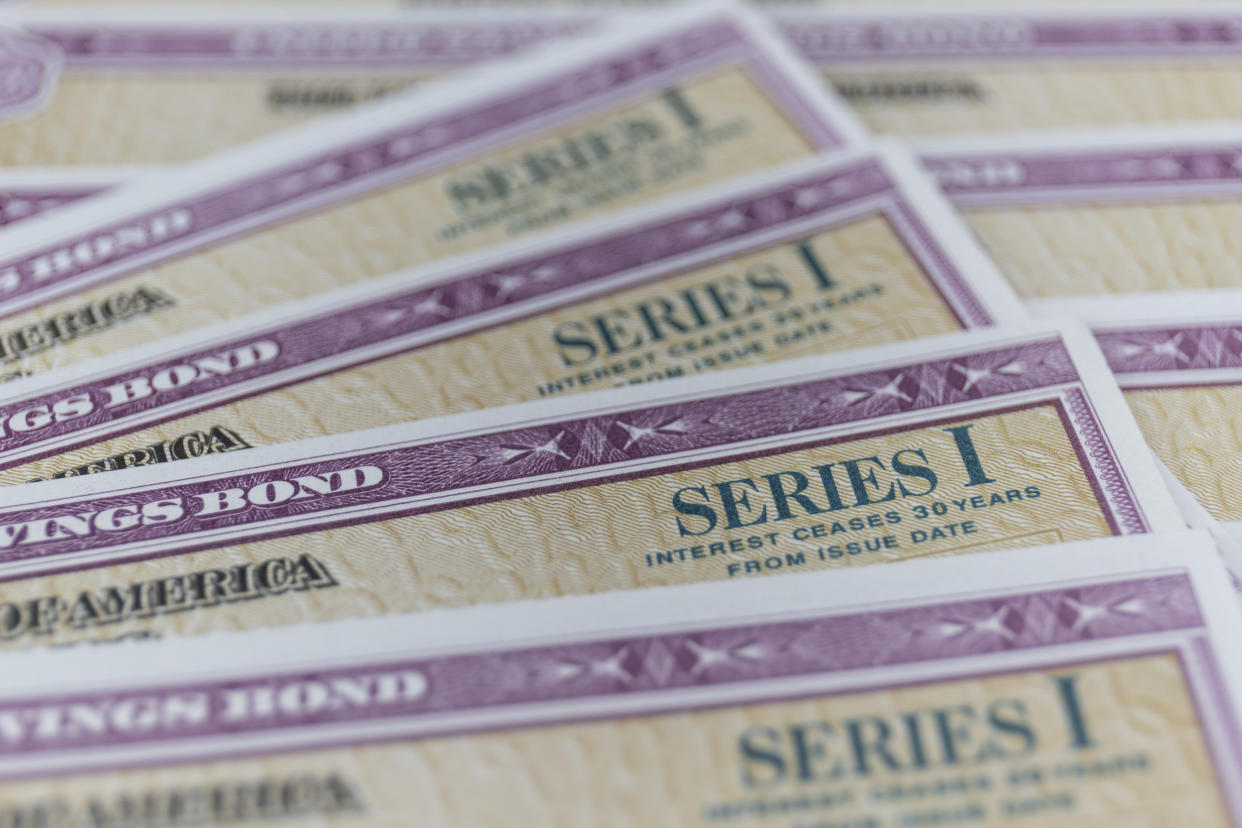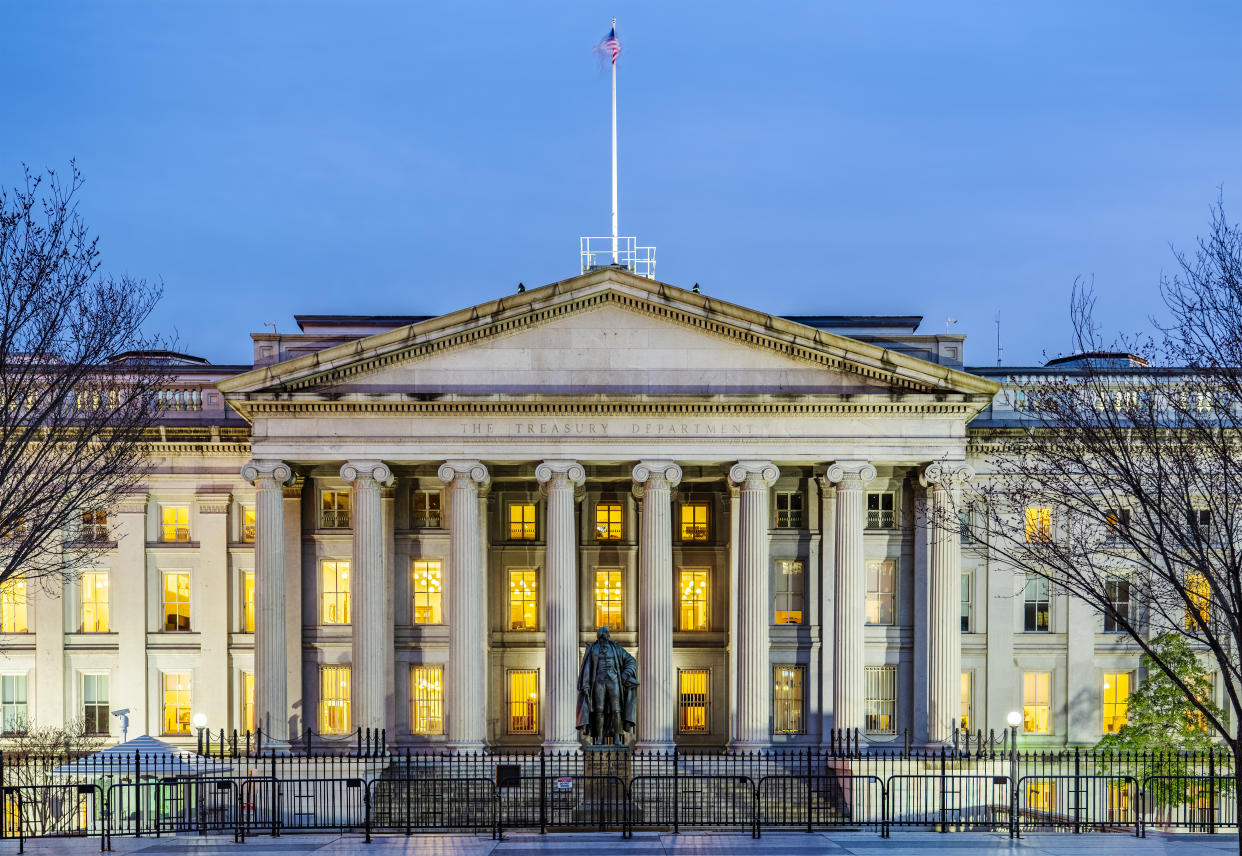New I bond purchases just got better in two crucial ways this month.
First, the annualized yield for new I bond purchases made through April is 5.27%, up from the 4.30% annual return on I bonds that had been in effect since May, the Treasury Department announced this month.
Second, these I bonds include a fixed rate of 1.30%, up from 0.9% for the past six months, which will be added to the I bond inflation rate that changes every six months. The fixed rate applies for the life of the bond.
As a result, the new reset rate remains a good return for savers looking for a super safe investment for the long term.
“What’s really attractive about the new I bond composite rate is the fixed rate. It’s the highest it has been since 2007 when it was 1.2%,” Ken Tumin, a senior industry analyst at LendingTree and founder of DepositAccounts.com, told Yahoo Finance.
“This fixed rate will ensure your I bond purchased through April will earn a 1.30% rate of return — that’s 1.30% above inflation,” he added. “It’s rare to have a risk-free savings product that is guaranteed to have returns above inflation for the next 30 years.”
What are I bonds?
I bonds are a type of US savings bonds, debt securities issued by the US Department of the Treasury. Savings bonds are issued as Series EE or Series I, the latter being I bonds.
The main attraction of I bonds: They are government-backed and guaranteed to keep pace with inflation because their return is tied to the Consumer Price Index, or CPI, the government’s official yardstick for consumer price growth.
These bonds became all the rage two years ago amid soaring inflation, which pumped up the annualized rate to 7.12% in November 2021 and a record 9.62% in May 2022. The annual rate has since fallen back as inflation’s been tamped down.
New rates on I bonds are set every May and November by the Treasury Department. Because of the twice-yearly adjustments, the date you buy your I bonds determines your returns.
The I bond rate is made up of the fixed rate, which applies for the 30-year life of the bond, and a semiannual inflation rate calculated from a formula based on the six-month change in the non-seasonally adjusted CPI for all Urban Consumers all items.
The I bond fixed rate in November 2021 and May 2022 — when rates were soaring — had a 0% fixed rate. The fixed rate increased last November to 0.4% for those who purchased the bonds through April. It rose to 0.9% in May.
Meanwhile, the new I bond composite rate is on par with what today’s certificates of deposit, or CDs, offer — with yields at or just above 5% at online banks for terms of around one year. Treasury bills with maturities of three and six months have also been floating around 5%, while the one-year Treasury bill has been yielding above 5%.
Investing in I bonds
The bonds can be purchased in allotments of $25 or more when you buy them electronically from the US Treasury’s website, TreasuryDirect, with no fee. Paper bonds are sold in five denominations: $50, $100, $200, $500, and $1,000.
Normally, you can’t buy more than $10,000 in I bonds each calendar year. There are a couple of ways to bump up that amount. For instance, you can direct your federal tax refund to buy an additional $5,000 in I bonds.
The interest is generally free from state and local taxes. If you qualify, you might also be able to avoid some or all of savings bond interest from federal income tax when you use it to pay qualified higher education expenses at an eligible institution or state tuition plan in the same calendar year you redeem the eligible I bonds.
A few restrictions to keep in mind: While I bonds earn interest for 30 years or until they’re cashed in — whichever comes first — you can’t cash in until after one year. And if you cash in before five years, you lose three months of interest.
For those who can patiently wait, however, “I bonds become the perfect emergency fund after five years of ownership,” Tumin said. “The higher the fixed rate, the better it becomes.”
While not a get-rich kind of investment, investors who scooped up these far-from-flashy bonds when they were their highest in the I bond history in 2021 and 2022 have already been rewarded. If you purchased I bonds in October 2022, for instance, you would have earned 9.62% for six months and then 6.48% for six months. That’s an average one-year return of about 8.05%.
The new rate with that more muscular fixed rate does give any new purchases some sparkle though.
“I bonds at this fixed rate protect your savings from inflation and are protected against deflation,” Dave Enna, founder of Tipswatch.com, a blog that tracks inflation-protected investments, told Yahoo Finance. “You can never lose a penny of accumulated principal, and the investment won't be affected by market swings.”
Kerry Hannon is a Senior Reporter and Columnist at Yahoo Finance. She is a workplace futurist, a career and retirement strategist, and the author of 14 books, including "In Control at 50+: How to Succeed in The New World of Work" and "Never Too Old To Get Rich." Follow her on Twitter @kerryhannon.
Read the latest financial and business news from Yahoo Finance

